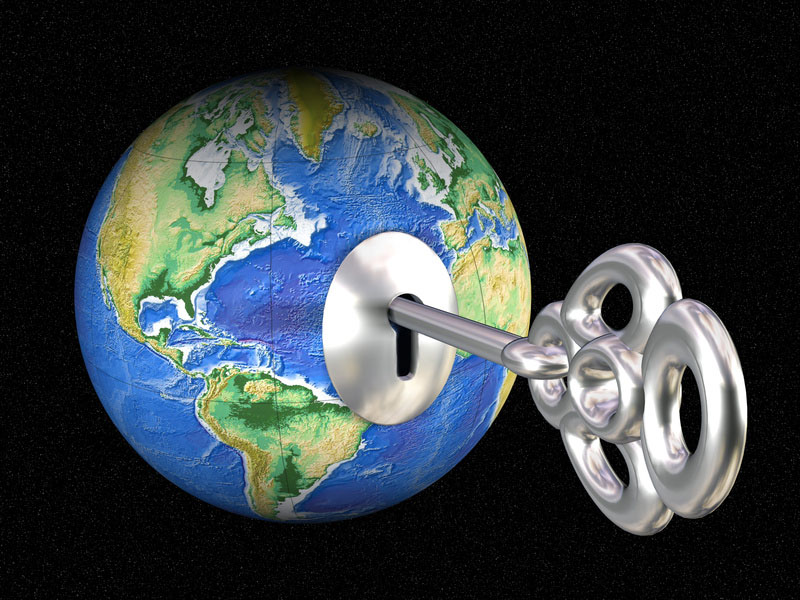Case History – Fastener Manufacturer
BACKGROUND: A large (1.2 million sq. ft.) fastener manufacturer and steel coil treatment facility had a costly problem. This facility has a 150,000 gallon per day Zinc/Phosphate wastewater treatment system. Despite this capability, oils contamination from cold heading operations within the facility impose a solids and oil burden which the waste treatment system cannot process.
The oil spills and leakage from operating equipment is present on floors adjacent to production machines. Riding floor scrubbers are in constant operation, (8) hours per shift, (3) shifts per day, (6) days per week. In addition, each of (200) cold heading machine operators maintain safe & clean conditions in work areas using mop & bucket w/cleaner. Total dirty floor cleaner waste is over (1,200) gallons per day.
PROBLEM: This facility had been using a (7,000) gal. Capacity floor pit to accumulate cleaner waste. A liquid waste hauling firm had been contracted to pickup and dispose of this material, however; solid debris such as sand, dirt, zinc-sterate, scrap metal particulate, etc., was left behind. Up to 25% solids began to accumulate, thus; a special arrangement with the hauling service added solids removal to the pick up service, resulting in a 40 cents per gallon charge. Wastewater Engineers, Inc. was contracted and requested to propose cost savings. Investigation and engineering studies indicated an opportunity to reduce costs and to provide the customer with additional savings via recycling.
SOLUTION : Wastewater Engineers, Inc. proposed an affordable system to handle the stream.
PHASE I: Gross Contaminants Removal. W.E., Inc. designed and built a special receiving box. This unit features a perforated (removable) screen, which captures larger debris such as papers, broken pallet wood chips, miscellaneous fasteners, scrap metals and general debris. The system operator simply dumps accumulations into trash barrels. A series of baffles in the receiving box promotes dirt settling. A pump transfers fluids from the receiving box, through a canister type bag filter and into a (2000) gallon capacity holding tank. The holding tank provides storage and retention time for oils to precipitate to the surface where a belt-type oil skimmer removes gross oils.
PHASE II: Polish Fluids Via Batch Treatment. The riding floor scrubber operator was assigned the responsibility of operating the treatment system. Upon demand, operator “starts” a transfer pump to fill an RT reactor unit. W.E., Inc. provided float & level controls and a “mix tank filled” indicator light on the RT control panel. This allows the operator freedom to perform other duties while the RT unit is filling. The Operator pushes “start” button on RT unit’s turbine mixer, adds WE reactant and allows (5) minutes of mixing and reaction time. The WE reactant initiates a process of precipitation and agglomeration of contaminants, and; produces a large “floc” which results in a complete separation and encapsulation of contaminants. The rapid settling of the “floc” allows the operator to open drain/filter valves after only (1) minute automated, operator is required to attend the reaction/treatment batch process for less than (10) minutes per batch.
Fluids are automatically pumped via float activated pump from the RT unit to a clean (recycling) tank. Approximately 90% of the active soap ingredients remain intact after the Wastewater Engineers Inc. process, thus; a reduction in floor cleaning chemical can be realized.
RESULTS: Savings in Treating Vs Haul Away This facility has saved over 60% Vs haul away and reduced chemical floor cleaning expense by 90%.
COST SAVINGS
Hauling:
| Volume/year | Hauling cost @ $0.40/gallon | Treatment cost @$0.15/gallon |
| 360,000 gallon | $144,000 | $54,000 |
Cleaner (soap):
Before Installation of Wastewater Engineers, Inc. system:
| Cost of cleaner | Gallons/week | Cost/year |
| $3.79 | 350 | $66,325.00 |
After installation of Wastewater Engineers, Inc. system.
| Cost of cleaner | Gallons/week | Cost/year |
| $3.79 | 50 | $9,475.00 |
Savings Summary:
| Hauling Cost | $144,000 |
| Treatment cost | $54,000 |
| Savings | $90,000 |
| Cleaner cost before system | $66,375 |
| Cleaner cost after system | $9,475 |
| Savings | $56,900 |
Total Savings: $146,850
Additional Information:
A 200 gallon capacity unit was initially sold making the complete “hardware” cost of all items at $31,450. Payback (ROI) was (3) months. System was installed in Jan. 5, 1991. Because of added daily volumes from parts washing fluids and vibratory fluids (both streams have high oils & solids), an RT 500 HO Unit was installed in March, 1995. The original (200) gallon unit treated (6) batches/day, (6) days/wk for (3) years. Approx. $50. For repair parts (float valve) was total maintenance cost over the (3) years of service. The original RT 200 was moved to another plant and is still in service. This business has purchased additional systems for (4) additional plants, (5) turn-key systems in all. Floor cleaner effluent was tested for sewer discharge standards – all characteristics were within discharge limits. Most critical were zinc sterate, oils & solids. Sludge passed original TCLP and each year for (3) additional years.
This business has sealed all floor drains and is a “zero discharge” facility. All water-based processed fluids are now being recycled.




